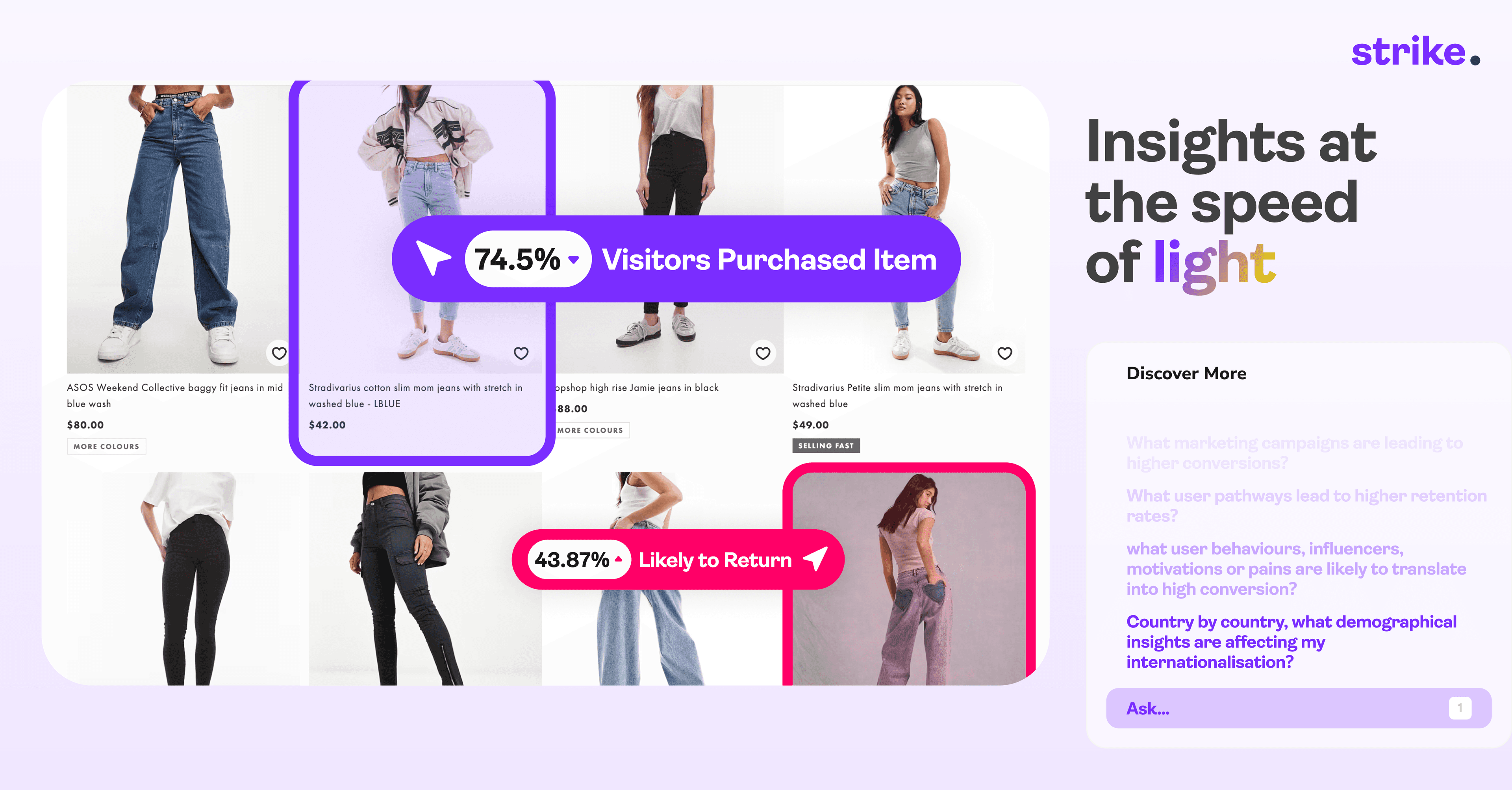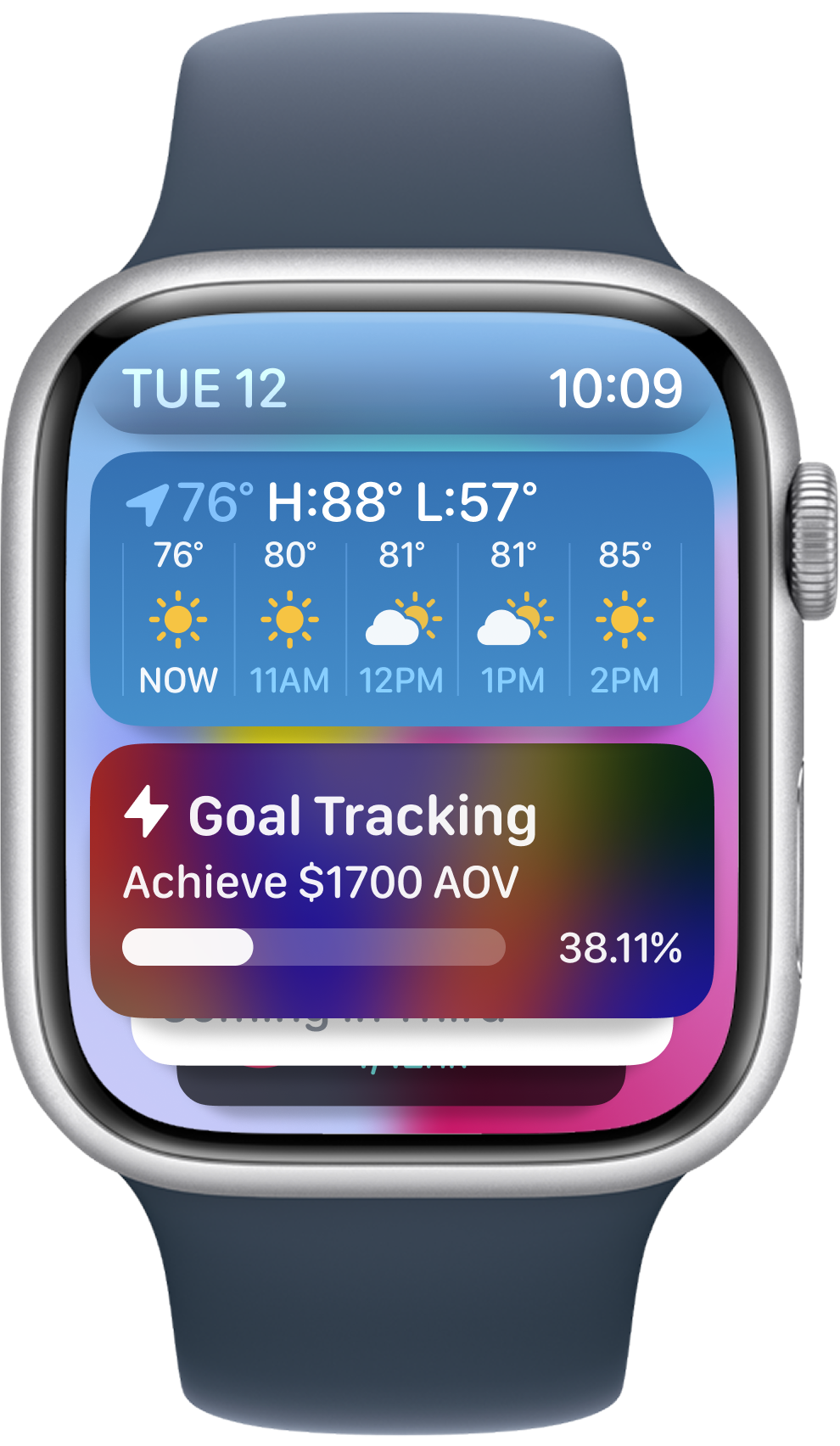
Strike Analytics: AI-Driven Platform Development
From Data Overload to Actionable Insights
Summary
- When I co-founded Strike in 2023, I did so because I kept seeing the same problem everywhere: companies were drowning in data but starving for insights. The statistics were staggering - $1.3 trillion lost annually because leaders struggle to use data effectively.
- The important challenge I set out to solve was bridging the gap between what customers say and what they actually do. Most analytics tools could tell you the "what" but completely missed the "why" behind user behaviour.
- After conducting interviews with over 50 people across 20+ cities globally and running multiple experiments, we evolved our technical approach. We wanted to learn what actually worked rather than building what we thought should work.
- AI analytics requires a completely different approach than traditional dashboards. You're not just showing data - you're making recommendations that affect business strategy and resource allocation.
- This project taught me that the future of analytics isn't about bigger dashboards or more sophisticated algorithms - it's about making complex data insights immediately actionable.
The data analytics space is incredibly fragmented. The challenge we had to tackle was connecting insights that lived in completely separate systems:
- Siloed Data Sources – User interviews lived in Notion, marketing performance was in Google Analytics, support conversations were in Intercom, and sales data was in HubSpot. Nobody could see the connections.
- Time-Intensive Analysis – Teams were spending entire days manually correlating different data types. By the time they found insights, market conditions had often changed.
- Human Interpretation Bottleneck – Even when teams found patterns, translating them into actionable business decisions required extensive meetings and debates.
- Scale vs. Speed Trade-off – Companies could either analyse data thoroughly (taking weeks) or quickly (missing crucial context). There was no middle ground.

The Solution
We built an AI framework that automatically cross-compared qualitative insights with quantitative metrics, revealing the psychological drivers behind user behaviour patterns. Rather than replacing human analysis, we augmented it with machine learning that could spot connections humans would miss.
After conducting interviews with over 50 people across 20+ cities globally and running multiple experiments, we evolved our technical approach. We wanted to learn what actually worked rather than building what we thought should work.

Before and After
Before
Teams spent 24+ hours manually gathering data from different sources, creating spreadsheets, and trying to find correlations through gut feel and basic statistical analysis.
After
After understanding how businesses actually made data-driven decisions, our AI system could cross-examine multiple data sources and surface actionable insights in under 1 hour, with clear confidence indicators and suggested next steps.

What We Built
What we delivered transformed how teams approached data analysis:
- 96% reduction in insight generation time (from 24 hours to 1 hour)
- 1.86% sign-up conversion rate without any acquisition costs
- 8.55% click-through rate on our messaging (6x industry benchmarks)
- Led 13 strategic pivots based on real market feedback
- 23% improvement in prediction accuracy for business decisions
Building AI That Humans Could Trust
AI analytics requires a completely different approach than traditional dashboards. You're not just showing data - you're making recommendations that affect business strategy and resource allocation.
Every algorithmic decision had to be explainable. We couldn't just tell users what to do; we had to show them why our AI reached those conclusions.


The Technical Process
When I started Strike, most analytics tools were either too simple (basic reporting) or too complex (requiring data science teams). There was nothing that bridged business strategy with technical implementation.
So I developed our "10 inches deep vs. 10 inches wide" approach - focusing deeply on specific data types before expanding to related areas.
Implementing Our ML Framework
Working with our data science team, I architected a system combining multiple machine learning approaches:
- Topic Modelling to identify patterns in customer conversations and support tickets
- ARIMA models for time-series forecasting of engagement and retention metrics
- Logistic Regression to predict conversion likelihood based on multi-variable inputs
- Sentiment Analysis to quantify emotional responses from qualitative feedback
The key insight was using these models together rather than in isolation. Each algorithm validated and enriched the others' findings.
Creating Benchmark Datasets
To ensure our AI recommendations were reliable, I developed a benchmark system using historical data where we already knew the outcomes. This let us fine-tune our models against real business results rather than theoretical accuracy.
We tested every new model version against these benchmarks before releasing updates, maintaining prediction accuracy while improving speed.
Iterating Based on User Behaviour
We instrumented everything to understand how teams actually used our insights. The data revealed something crucial: people would look at our analysis, say "that's interesting," then do nothing.
This led to our biggest pivot - evolving from analytics to automation. Instead of just showing insights, we built systems that could automatically implement personalised experiences based on what we discovered.


Leading a Distributed Team
Managing teams across Sydney, Singapore, Cairo, and Berlin required new approaches to alignment and communication. I developed a storytelling-based methodology where every technical decision connected back to our core mission of making data accessible to anyone.
Daily video updates helped maintain alignment across time zones, and I made sure everyone understood not just what we were building, but why each feature mattered for our users' success.
Key Takeaways
This project taught me that the future of analytics isn't about bigger dashboards or more sophisticated algorithms - it's about making complex data insights immediately actionable. The companies that succeed will be those that can turn data analysis from a periodic exercise into a continuous, automated process that informs every business decision in real-time.
Analytics on Every Device
Our platform delivered actionable insights across all platforms, enabling decision-makers to stay informed no matter where they are.

Quick insights dashboard for monitoring key metrics on the go.